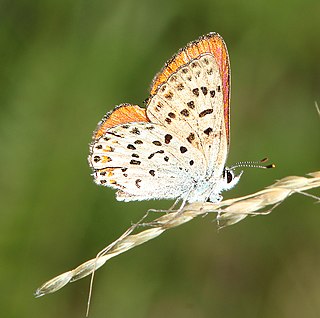
Convolvulaceae, known commonly as the bindweed or morning glory family, is a family of about 60 genera and more than 1,650 species of mostly herbaceous vines, but also trees, shrubs and herbs, and also including the sweet potato and a few other food tubers.

Tilapia is the common name for nearly a hundred species of cichlid fish from the coelotilapine, coptodonine, heterotilapine, oreochromine, pelmatolapiine, and tilapiine tribes, with the economically most important species placed in the Coptodonini and Oreochromini. Tilapia are mainly freshwater fish inhabiting shallow streams, ponds, rivers, and lakes, and less commonly found living in brackish water. Historically, they have been of major importance in artisanal fishing in Africa, and they are of increasing importance in aquaculture and aquaponics. Tilapia can become a problematic invasive species in new warm-water habitats such as Australia, whether deliberately or accidentally introduced, but generally not in temperate climates due to their inability to survive in cold water.

Pyracantha is a genus of large, thorny evergreen shrubs in the family Rosaceae, with common names firethorn or pyracantha. They are native to an area extending from Southwest Europe east to Southeast Asia. They resemble and are related to Cotoneaster, but have serrated leaf margins and numerous thorns.

Guarea is a genus of evergreen trees in the family Meliaceae, native to tropical Africa and Central and South America. They are large trees 20–45 m tall, with a trunk over 1 m diameter, often buttressed at the base. The leaves are pinnate, with 4–6 pairs of leaflets, the terminal leaflet present. The flowers are produced in loose inflorescences, each flower small, with 4–5 yellowish petals. The fruit is a four or five-valved capsule, containing several seeds, each surrounded by a yellow-orange fleshy aril; the seeds are dispersed by hornbills and monkeys which eat the aril.

Bhitarkanika Mangroves is a mangrove wetland in Odisha, India, covering an area of 650 km (400 mi) in the Brahmani and Baitarani river deltas.

The Encyclopedia of Life (EOL) is a free, online collaborative encyclopedia intended to document all of the 1.9 million living species known to science. It is compiled from existing databases and from contributions by experts and non-experts throughout the world. It aims to build one "infinitely expandable" page for each species, including video, sound, images, graphics, as well as text. In addition, the Encyclopedia incorporates content from the Biodiversity Heritage Library, which digitizes millions of pages of printed literature from the world's major natural history libraries. The project was initially backed by a US$50 million funding commitment, led by the MacArthur Foundation and the Sloan Foundation, who provided US$20 million and US$5 million, respectively. The additional US$25 million came from five cornerstone institutions—the Field Museum, Harvard University, the Marine Biological Laboratory, the Missouri Botanical Garden, and the Smithsonian Institution. The project was initially led by Jim Edwards and the development team by David Patterson. Today, participating institutions and individual donors continue to support EOL through financial contributions.
Pyracantha rogersiana, the Asian firethorn, is a species of flowering plant in the family Rosaceae, native to western China. Growing to 4 metres (13 ft) tall and broad, it is an evergreen shrub with glossy, narrow leaves, and masses of white flowers followed by small yellow berries 8 mm in diameter. It is grown in gardens, yards, and parks, where it can be used as hedging, wall cover, or in a mixed shrub border. The cultivar 'Flava' has gained the Royal Horticultural Society's Award of Garden Merit.
Polymera is a genus of crane fly in the family Limoniidae.

Hexatomini is a tribe of limoniid crane flies in the family Limoniidae. There are about 16 genera and at least 250 described species in Hexatomini.
Spilomyia foxleei is a species of syrphid fly in the family Syrphidae.
Ectecephala laticornis is a species of grass fly in the family Chloropidae.
Gymnocarena bicolor is a species of fruit fly in the family Tephritidae.

Historis acheronta, the tailed cecropian, is a species of crescents, checkerspots, anglewings, etc. in the butterfly family Nymphalidae.
Opilioacarus texanus is a species of mite in the family Opilioacaridae.
Aradus implanus is a species of flat bug in the family Aradidae. It is found in North America.
Nausigaster texana is a species of syrphid fly in the family Syrphidae.

Lycaena gorgon, known generally as the gorgon copper or stream water-crowfoot, is a species of copper in the butterfly family Lycaenidae. It is found in North America.

Leptoglossus gonagra, known as the passionvine bug, citron bug or squash bug in different parts of its range, is a species of leaf-footed bug in the family Coreidae. It is found in Africa, the Caribbean, Central America, North America, South America, Southern Asia, the Pacific Ocean and Oceania.
Asperula polymera is a species of flowering plant in the family Rubiaceae.
Plinia rogersiana is a species of plant in the family Myrtaceae. It is endemic to the state of São Paulo in the south-east of Brazil. It is considered critically endangered, possibly extinct.









